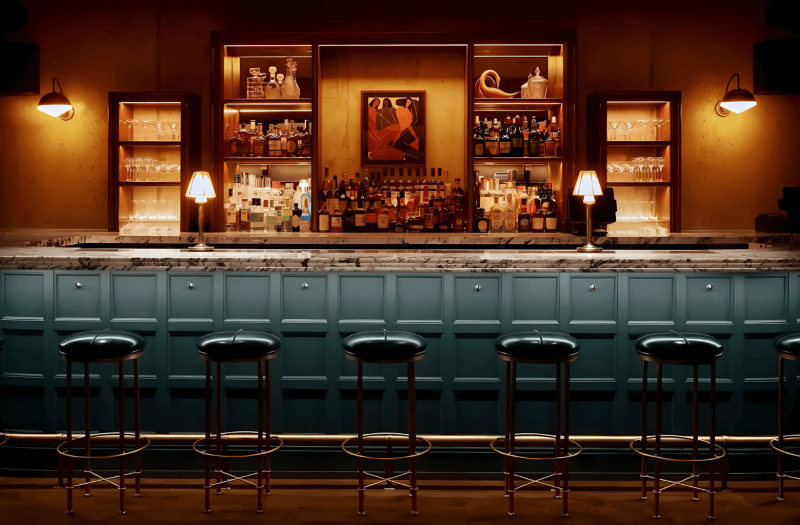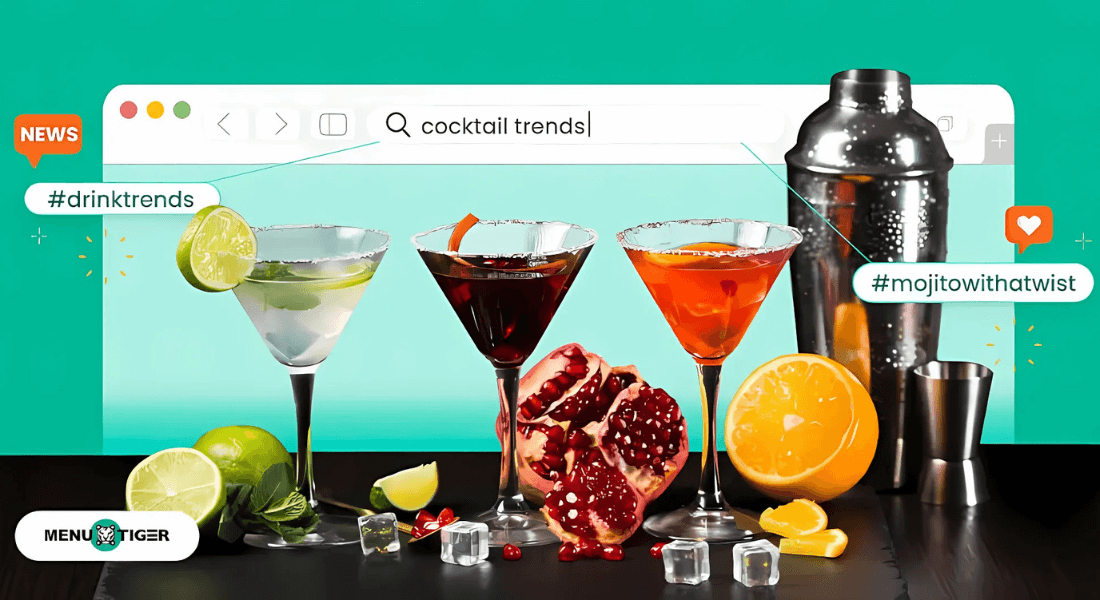Educating Bartenders Worldwide.
By Beverage Trade Network

The cocktail industry has evolved significantly, with 2025 bringing a new wave of innovation and customer expectations. The post-pandemic resurgence of nightlife has led to a demand for more immersive and experience-driven bars. Consumers are looking for not just a place to drink but a space to engage in storytelling, unique themes, and hyper-personalized service. Sustainability and technology are now at the forefront of bar operations, making it more important than ever to create a concept that is fresh, adaptable, and forward-thinking. This guide will explore the essential steps to opening a successful cocktail bar in today’s market, including insights many new entrepreneurs overlook.
Understanding the landscape is crucial before investing in a new bar. The cocktail scene in 2025 is dominated by experiential drinking, where patrons seek more than high-quality cocktails; they want an interactive element. Virtual reality tastings, scent-infused environments, and AI-generated drink pairings are gaining traction. Sustainability is also at the core of modern bar culture, with venues utilizing closed-loop systems to reduce waste and emphasize locally sourced ingredients. Another growing trend is the rise of “third spaces,” where cocktail bars double as creative hubs or co-working spaces during the day. The rise of zero-proof and low-ABV drinks continues, catering to the sober-curious movement. Identifying a niche that aligns with these trends while offering a distinct personality will set your bar apart in a saturated market.

Source: Nomad Day Bar
Navigating the regulatory framework of alcohol service is one of the most complex aspects of opening a bar. Liquor licenses vary by state and can take months to obtain, so planning early is essential. Zoning laws must also be considered, as some neighborhoods have strict regulations on nightlife establishments. In 2025, new laws regarding alcohol-to-go have been introduced in several states, providing additional revenue opportunities for bars. Community board approvals remain a challenge in some urban areas, so engaging with residents and positioning your bar as a benefit to the neighborhood can be key to securing the necessary permits.
Location can determine the success of a bar, but traditional high-foot-traffic areas are no longer the only profitable option. Many successful bars are now thriving in residential neighborhoods, appealing to locals rather than relying on tourists or downtown crowds. Lease agreements have also shifted, with many landlords offering percentage-based rent deals, making it easier for new businesses to survive in fluctuating markets. A creative approach to location can make all the difference, such as repurposing an old warehouse, opening in an unexpected rooftop setting, or even utilizing a space that transforms between a café and bar throughout the day.
Crafting a bar experience today goes far beyond Instagrammable aesthetics. Multi-sensory design elements, such as scent-driven cocktail menus, temperature-controlled rooms, and personalized lighting for different seating areas, can significantly enhance the guest experience. Seating strategy plays a critical role in revenue generation, with high-margin bars focusing on bar seats and communal tables over lounge seating. Personalization is becoming a standard expectation, with some bars using QR code menus that tailor drink recommendations based on a patron’s preferences and past orders. The key is to craft an environment that immerses guests in the theme and keeps them returning for new surprises.

Source: Bring Fido
Standing out in the cocktail bar scene requires a unique angle, and some of the most successful new establishments are those that integrate multiple concepts into one. A prime example is The Bookstore Bar & Café in Seattle, a hidden cocktail bar concealed behind a working bookstore. This space transitions seamlessly from a daytime café and reading lounge into an intimate speakeasy-style cocktail venue at night. Other innovative models include traveling pop-up bars that test markets before committing to a permanent space or speakeasies hidden inside record stores, barbershops, or antique shops. These creative concepts generate organic word-of-mouth marketing and a sense of exclusivity that attracts customers.
A well-designed beverage program balances innovation with accessibility. In recent years, more bars have integrated fermentation and molecular mixology techniques, offering house-made botanical syrups, and even creating custom aging programs for spirits. Sustainability plays a significant role, with bars embracing closed-loop systems that eliminate waste by repurposing ingredients in multiple ways. Pricing strategy is critical, while premium craft cocktails can command high prices, it’s essential to balance the menu with approachable options and happy hour incentives. Additionally, the demand for mocktails has surged, making a dedicated non-alcoholic cocktail section a must-have rather than an afterthought.
Technology is transforming how bars operate, from AI-powered cocktail recommendations to dynamic pricing models that adjust based on demand. New POS systems now integrate guest relationship management tools, allowing bartenders to track regular customers’ preferences and offer a highly personalized experience. Self-pour technology and RFID-based systems are also becoming more common, reducing labor costs and increasing efficiency. Surge pricing, which adjusts drink costs based on real-time demand, is another innovation that is gaining traction, providing increased revenue during peak hours while keeping prices competitive during slower times.

Source: Drink Command
A successful bar is built on a strong staff culture. Fair wages and employee retention are central to running a sustainable business. Many bars are moving away from tip-reliant pay structures in favor of salaried positions with profit-sharing models. Bartender autonomy is another important factor, allowing staff to create their off-menu specials increases engagement and fosters creativity. Employee wellness is also a priority, with bars offering mental health resources and fostering environments that minimize burnout. A motivated and well-supported team ultimately leads to better service and a stronger brand reputation.
Marketing & Brand Building
Marketing a new bar requires more than just a social media presence, it’s about building a compelling story. Successful bars are focusing on storytelling through local collaborations, such as partnering with chefs for exclusive food pairings or hosting interactive mixology classes. Community-driven marketing, like creating members-only cocktail clubs or secret menu offerings for loyal customers, generates long-term engagement. Social media strategies have also evolved beyond Instagram, with bars leveraging viral trends, live-streaming mixology sessions, and incorporating interactive content that keeps audiences engaged both online and offline.

Source: Menu Tiger
Sustaining and Expanding Your Cocktail Bar
The opening phase is critical to long-term success. A soft opening, which allows staff to refine operations with a limited audience, is often more effective than a large-scale launch. Once operational, analyzing customer data to identify best-selling drinks, peak hours, and popular seating arrangements can inform business adjustments. Adapting to industry changes and consistently introducing fresh elements, whether through seasonal menus, guest bartender collaborations, or interactive events can keep the bar relevant. Scaling should be done carefully; expanding too quickly can dilute the original brand, while a thoughtful approach ensures the essence of the bar remains intact.
[[relatedPurchasesItems-31]]
Opening a cocktail bar requires a blend of creativity, market awareness, and adaptability. Success hinges on securing the right location, crafting an immersive concept, leveraging technology, and cultivating a strong staff culture. Each element contributes to long-term sustainability and growth. Beyond serving drinks, the best bars create unforgettable experiences and foster a loyal community. Building a brand that resonates with customers means continuously innovating, whether through evolving cocktail menus, immersive atmospheres, or exclusive membership programs. Staying adaptable to market shifts, such as changing liquor laws, consumer preferences, and technological advancements, ensures continued success. Entrepreneurs who combine passion with strategic planning will stand out in this competitive industry. While creativity fuels the concept, smart financial management, customer engagement, and a dedication to quality will define long-term profitability.
Header image source: Punch Drink
Also Read:
Elevate Your Bar Business With Top Bartender Spirits Awards Picks
Boost Your Bar’s Foot Traffic: Strategies To Fill Seats And Drive Sales
Hidden Profits In The Bar Business